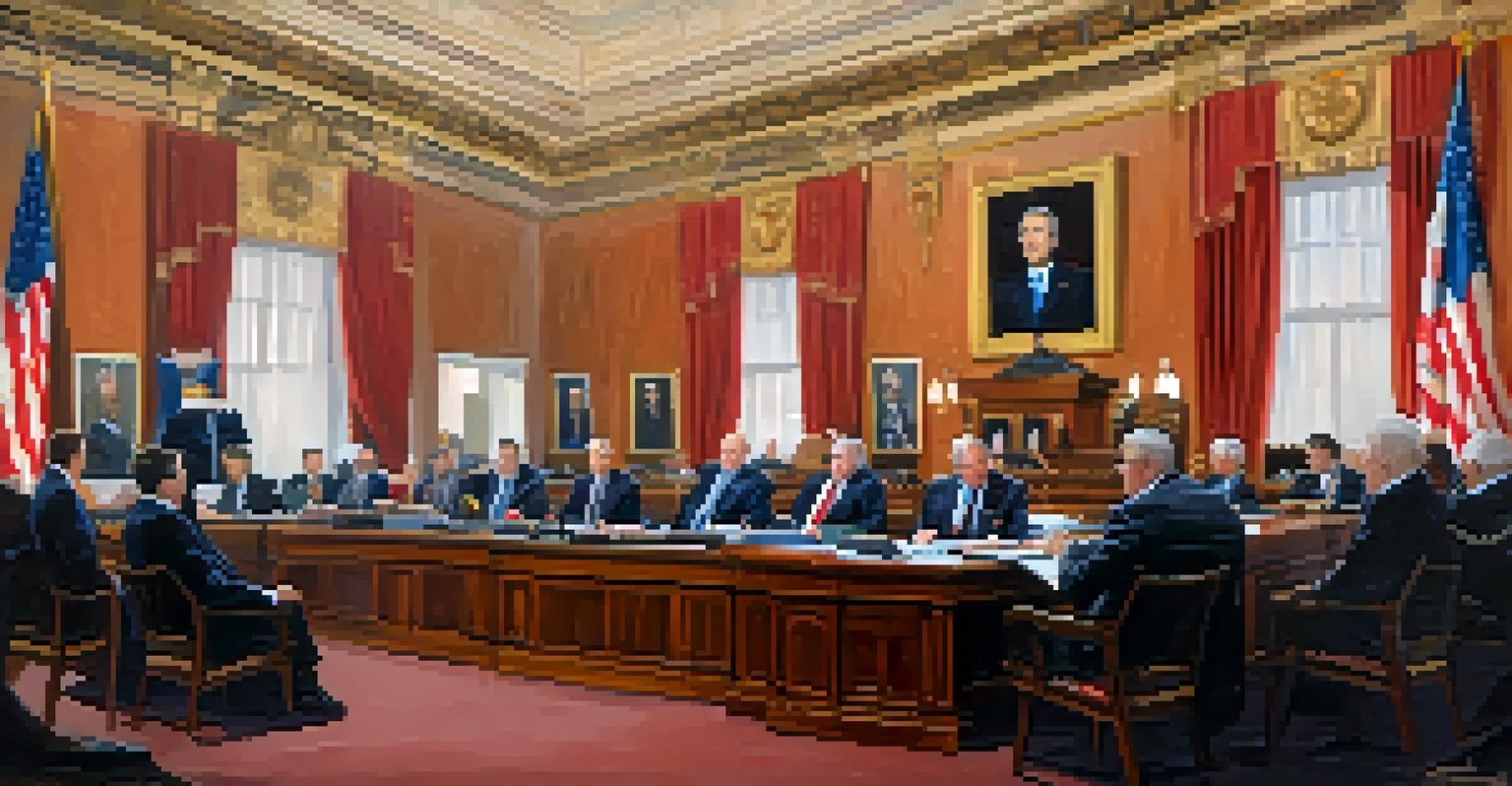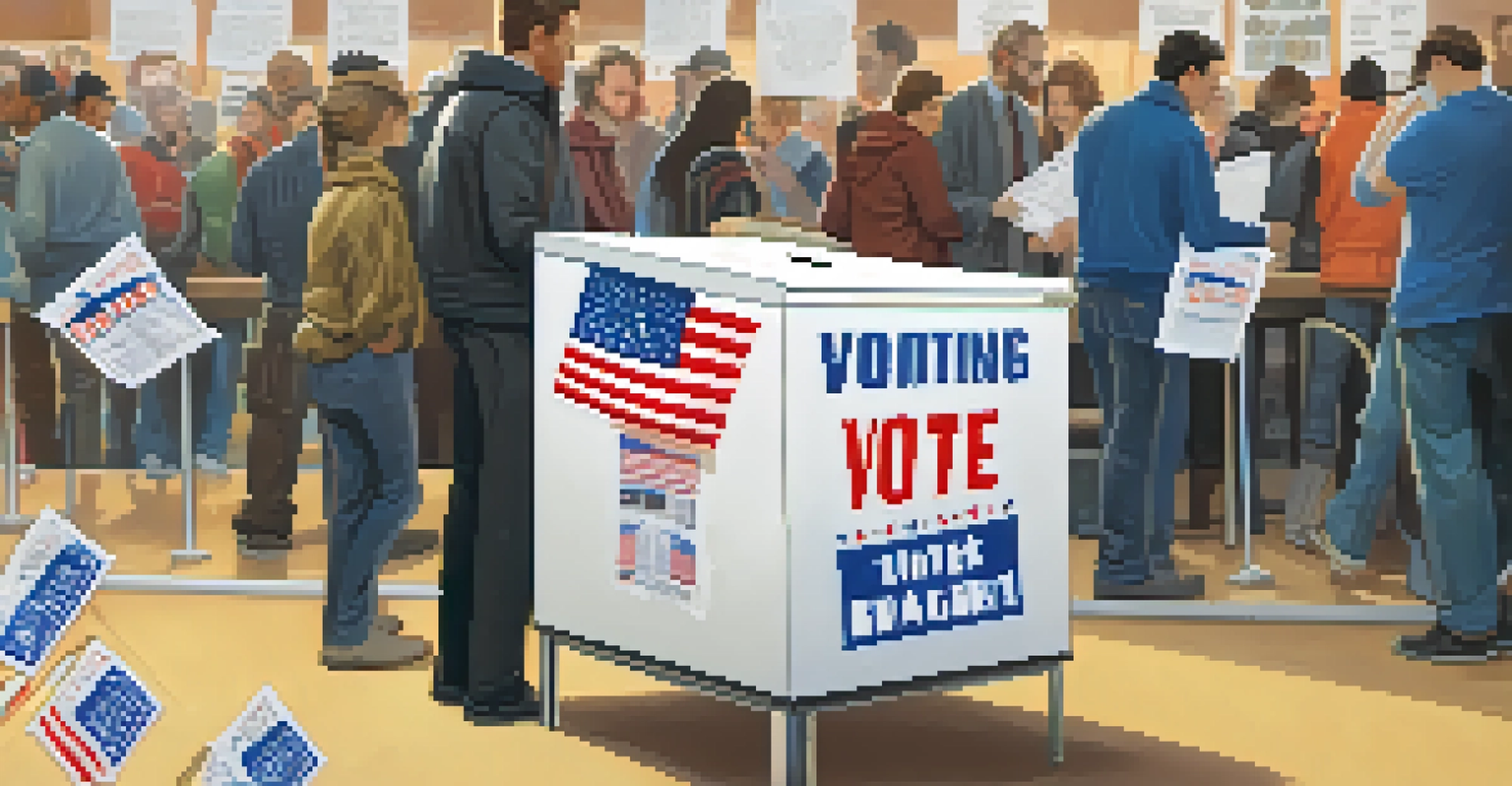Understanding Utah's Governance Structure and Its Functions

An Overview of Utah's Government Structure
Utah's governance structure is a unique blend of state and local systems, designed to ensure effective management and representation. At its core, the state government operates under a constitutional framework established in 1896, with several branches working together. Broadly, Utah's government is divided into three main branches: executive, legislative, and judicial, each with distinct roles and responsibilities.
The price of apathy towards public affairs is to be ruled by evil men.
The executive branch, led by the governor, is responsible for enforcing laws and managing state agencies. The legislative branch, comprising the Utah State Legislature, creates laws and oversees budgetary matters. Meanwhile, the judicial branch interprets laws through various courts, ensuring justice and legal consistency across the state.
This tripartite system is essential for maintaining checks and balances, preventing any single branch from becoming too powerful. Understanding how these branches interact is key to grasping the overall governance of Utah.
The Executive Branch: Roles and Responsibilities
The executive branch of Utah's government is headed by the governor, who is elected to a four-year term and plays a crucial role in state administration. The governor's responsibilities include proposing budgets, appointing officials, and ensuring state laws are executed effectively. This branch also includes other elected officials, such as the lieutenant governor and members of the state cabinet.

Governors in Utah have significant influence over legislative processes, often shaping policy through executive orders and veto power. Additionally, they represent the state in external affairs, liaising with other states and the federal government. This powerful position requires a balance of leadership, diplomacy, and strategic planning.
Utah's Government Structure Overview
Utah's governance is divided into three branches—executive, legislative, and judicial—ensuring effective management and representation.
Overall, the executive branch is pivotal for implementing laws and policies that affect everyday life for Utah residents, making its functions vital to state governance.
The Legislative Branch: Crafting Laws and Policies
Utah's legislative branch, known as the Utah State Legislature, is a bicameral body consisting of the Senate and the House of Representatives. This structure allows for a more comprehensive approach to lawmaking, with each chamber having its own unique responsibilities and processes. Senators serve four-year terms, while House members serve two-year terms, ensuring that legislation reflects the evolving needs of citizens.
Democracy is not a spectator sport.
The legislative process begins with the proposal of bills, which are then debated and voted upon in both chambers. Committees play a crucial role in reviewing these bills, allowing for in-depth analysis and public input. Once a bill passes both chambers, it is sent to the governor for approval or veto.
This collaborative effort among legislators ensures that diverse perspectives are considered in lawmaking, contributing to a well-rounded governance structure. The legislative branch is, therefore, essential for creating policies that address the needs and concerns of Utah residents.
The Judicial Branch: Upholding Justice
The judicial branch of Utah's government is responsible for interpreting laws and ensuring justice is served. This branch is comprised of various courts, including the Utah Supreme Court, Court of Appeals, District Courts, and Justice Courts, each with specific jurisdiction and functions. Together, they work to resolve disputes, uphold rights, and maintain the rule of law in the state.
Judges in Utah are appointed through a merit-based system, which ensures that qualified individuals oversee legal proceedings. This system not only enhances the quality of justice but also fosters public trust in the judicial process. Cases can range from criminal matters to civil disputes, showcasing the branch's versatility in handling diverse legal issues.
Local Governments Foster Community
Local governments in Utah address community-specific needs, allowing residents to engage in decision-making that impacts their daily lives.
Ultimately, the judicial branch serves as a guardian of the law, protecting individual rights and ensuring that justice is equitably administered. Its functions are crucial to maintaining social order and reinforcing the principles of democracy in Utah.
Local Government: The Backbone of Community Governance
Local government in Utah plays a vital role in addressing the immediate needs of citizens at the community level. Utah is divided into counties, cities, and towns, each with its own governing body responsible for local laws and services. This decentralized structure allows for tailored governance that responds directly to the unique needs of different communities.
County governments oversee essential services such as public safety, health services, and infrastructure maintenance, while city and town councils manage local ordinances and community initiatives. This local governance ensures that residents have a voice in decisions that impact their daily lives, fostering a sense of community and civic engagement.
By understanding the functions of local governments, Utah residents can better appreciate how their voices shape policies and initiatives that directly affect their lives. This grassroots level of governance is crucial for democracy and community development.
Elections in Utah: Ensuring Democratic Participation
Elections are a fundamental aspect of Utah's governance, providing citizens with the opportunity to participate in the democratic process. The state holds regular elections for federal, state, and local offices, including the governor, legislators, and municipal leaders. Additionally, Utah employs a unique vote-by-mail system, making it easier for residents to cast their ballots.
The election process in Utah is designed to promote transparency and integrity, with measures in place to prevent fraud and ensure fair competition. Voter education is also a priority, with resources available to help citizens understand their rights and the voting process. This commitment to informed participation is essential for a healthy democracy.
Civic Engagement Drives Democracy
Active civic engagement is vital in Utah, empowering residents to influence policies and hold elected officials accountable.
By engaging in elections, Utah residents not only express their opinions but also influence the direction of their government. Understanding the electoral process empowers citizens to take an active role in shaping their community and state.
State Agencies: Machinery of Governance
State agencies in Utah serve as the machinery of governance, implementing laws and policies at various levels. These agencies are responsible for a wide range of functions, from managing natural resources to overseeing education and public health. Each agency operates under the authority of the executive branch, ensuring that state laws are enforced effectively.
For instance, the Utah Department of Transportation manages the state's transportation infrastructure, while the Utah State Department of Health oversees public health initiatives. These agencies often collaborate with local governments and community organizations to address specific issues, showcasing the interconnectedness of governance.

By understanding the role of state agencies, residents can better appreciate how policies translate into action. These agencies are essential for delivering services and programs that directly impact the quality of life in Utah.
The Importance of Civic Engagement in Utah
Civic engagement is crucial for a thriving democracy, and Utah encourages residents to actively participate in their governance. From attending town hall meetings to volunteering for local organizations, citizens have numerous opportunities to get involved and make their voices heard. This participation fosters a sense of community and accountability among elected officials.
Engagement can also take the form of advocacy, where residents work to influence policies that matter to them. Utah has a rich history of grassroots movements that have led to significant changes in state laws, demonstrating the power of civic involvement. By advocating for issues that resonate with them, citizens can drive meaningful change.
Ultimately, civic engagement empowers individuals to shape their governance and community, ensuring that the democratic process remains vibrant and responsive. Encouraging active participation is essential for the health of Utah's democracy.